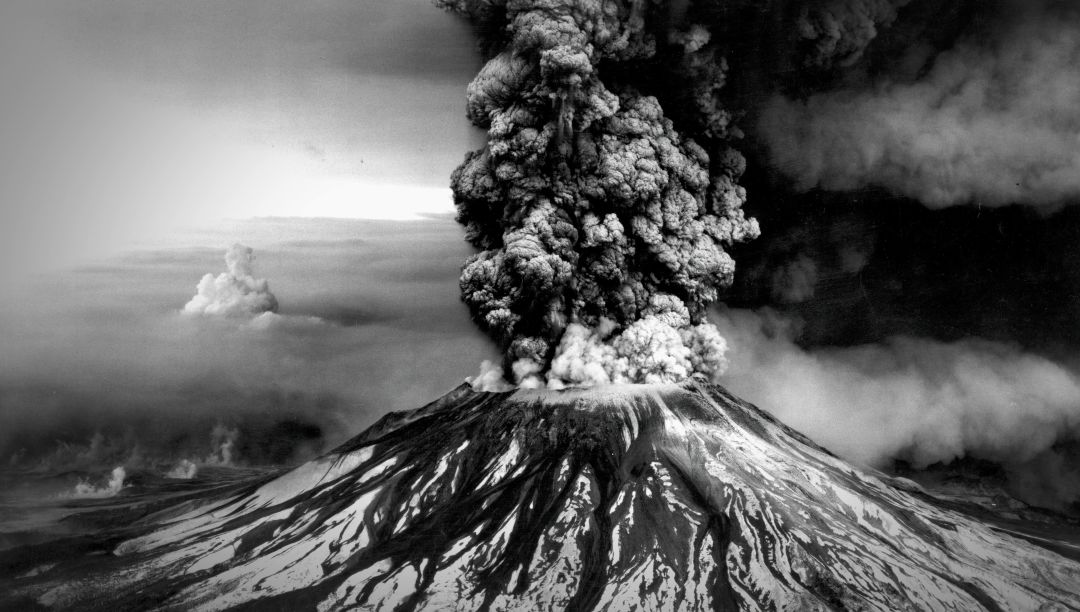Survivors of the Mount St. Helens Eruption Tell Their Story

Mount St Helens erupted in 1980, leaving over 50 people dead and hundreds of homes destroyed.
Image: 360 Productions LTD
Thirty-seven years ago, a spontaneous camping weekend almost cost the lives of then 20-year-old Venus Dergan and her then-boyfriend, Roald Reitan. The two had been camping on the south fork of the Toutle River in Washington when they awoke to an alarm sounding from the nearby town of Toutle.
That was the evacuation siren, but Dergan and Reitan didn’t know that yet. It was May 18, 1980, and the nearby Mount St. Helens, which had been dormant for over 100 years, was erupting. The two young campers were right in the path of volcanic mudflow. This Sunday, October 15, they tell their story in the opening episode of the Smithsonian Channel’s new series, Make It Out Alive.
Dergan tells Portland Monthly she still recalls waking up to that sound. She and Reitan were camping 30 miles from Mount St. Helens and couldn’t see the volcano from their site. They didn’t hear the eruption. When they left the tent, they saw water rushing up towards them. They pulled their tent up by the stakes and threw everything into the car.
“We were lucky that we got out of the tent when we did,” says Dergan. “They probably would have never found us. We would have been buried alive.”
As they scrambled to the car, a lahar from the eruption was speeding down the river towards them—hot mud from the volcano that had been cooled by the river until it was the temperature of bath water. Upriver from their campsite, they could see a train trestle holding back a mass of mud and debris. Their car wouldn’t start and they watched as the mudflow hit the train trestle, unleashing the debris that quickly engulfed their car. They climbed to the roof, the mudflow picking up the car and sweeping it upriver. Dergan and Reitan were thrown into the river, which had quadrupled in size, as their car drifted away like a boat.
“There was no place to run,” Dergan says. “It just picked us up and carved a path all the way down through the trees. We could hear trees snapping down.”
Reitan managed to get a hold of Dergan and pull her onto a log, and the two were swept about a mile downstream.
“The man saved my life; I will always be forever grateful to him,” Dergan says. “He's a part of my life forever. We didn't get married and live happily ever after—our lives went in different directions, but we've always stayed in touch.”
It wasn’t until after a helicopter airlifted them to safety that they were told what had happened—they had survived a natural disaster.
“There were only three things involved in us surviving that: luck, the will to live, and the grace of God,” Dergan says. “When you're 20 years old, you think you're immortal, and you don't think about your mortality. We got a slap in the face of our mortality that day.”
Make It Out Alive, which documents the experiences of survivors of different disasters, premieres on the Smithsonian Channel on Sunday, October 15 at 9 p.m.




